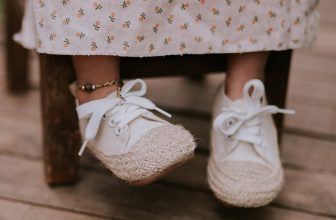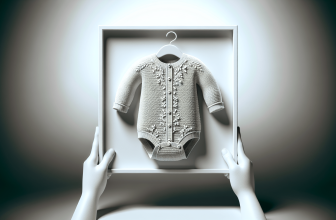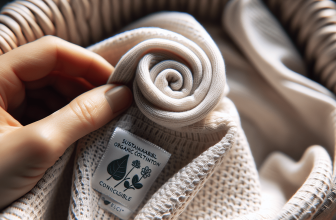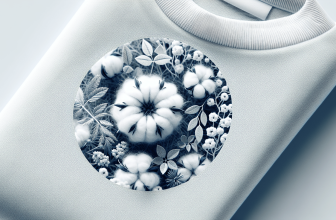Are you a new parent looking for ways to simplify your baby’s wardrobe? Creating a minimalist wardrobe for your baby can help you save time, money, and space while still keeping your little one stylish and comfortable. In this article, we will explore practical tips and strategies to curate a carefully selected collection of essential clothing items for your baby, ensuring that you have just what you need without the clutter. From versatile basics to practical considerations, discover how to embrace a minimalist approach to dressing your baby.
Choosing the right clothing materials
When it comes to choosing the right materials for your baby’s clothing, opting for organic and natural fabrics is a fantastic choice. Not only are these materials gentle on your little one’s delicate skin, but they are also better for the environment. Organic fabrics, such as organic cotton and bamboo, are grown without the use of harmful chemicals or pesticides, making them safer for your baby and the planet.
In addition to organic fabrics, it’s important to select materials that are soft and breathable. Babies have sensitive skin, so fabrics like cotton and bamboo are excellent options. These materials are not only gentle but also allow airflow, helping to keep your baby cool and comfortable throughout the day.
On the other hand, it’s important to avoid synthetic fabrics when building a minimalist baby wardrobe. Synthetic fabrics, such as polyester and nylon, are often made from petroleum-based materials and can trap heat and moisture against your baby’s skin. This can lead to discomfort and skin irritation, which we want to avoid. By prioritizing organic and natural fabrics and avoiding synthetic materials, you’ll be ensuring that your baby’s clothing is not only comfortable but also safe and sustainable.
Essential clothing items for a minimalist baby wardrobe
When it comes to creating a minimalist baby wardrobe, there are several essential clothing items that you’ll want to include. These items are versatile, practical, and can be easily mixed and matched to create a variety of outfits for your little one. Here are some must-have items for your minimalist baby wardrobe:
Onesies and bodysuits
Onesies and bodysuits are the foundation of a baby’s wardrobe. They are incredibly versatile and can be worn alone or layered with other clothing items. Look for onesies and bodysuits that are made from soft, organic cotton or bamboo. These materials are gentle on your baby’s skin and allow for easy movement.
Footed pajamas
Footed pajamas are perfect for keeping your baby warm and cozy during bedtime. Opt for pajamas made from breathable materials like organic cotton, as it helps regulate your baby’s body temperature while they sleep. Additionally, footed pajamas eliminate the need for socks or booties, providing convenience and saving precious time during those nighttime diaper changes.
Sleep sacks
Sleep sacks are a safe alternative to blankets and help keep your baby snug and secure during sleep. Look for sleep sacks made from soft and breathable fabrics, such as organic cotton or bamboo. These materials are not only comfortable but also prevent overheating and reduce the risk of SIDS (Sudden Infant Death Syndrome).
T-shirts and leggings
T-shirts and leggings are versatile pieces that can be easily mixed and matched to create various outfits. Opt for organic cotton or bamboo materials, as they are soft, breathable, and gentle on your baby’s skin. Look for t-shirts with envelope necklines, as they make dressing and undressing your baby a breeze.
Socks and booties
Keeping your baby’s feet warm and protected is essential. Invest in a few pairs of socks and booties made from soft and breathable materials. Look for options with non-slip soles, especially as your baby starts to explore and take their first steps.
Hats and sun protection
Protecting your baby’s delicate skin from the sun is crucial. It’s important to have a few hats with a wide brim to shield your baby’s face and neck from harmful UV rays. Look for hats made from UPF (Ultraviolet Protection Factor) fabric that provides additional sun protection.
Swaddle blankets
Swaddle blankets are a versatile and essential item for newborns. They can be used for swaddling, as a breastfeeding cover, or even as a makeshift changing mat. Opt for blankets made from soft and breathable materials like organic cotton or bamboo.
Cardigans and sweaters
Cardigans and sweaters are perfect for layering and adding warmth to your baby’s outfits. Look for options made from soft, natural materials like cotton or cashmere. These materials are gentle on your baby’s skin and provide a cozy and comfortable layer in cooler weather.
Pants and shorts
Having a few pairs of pants and shorts in your baby’s wardrobe is essential for their everyday comfort. Opt for options made from soft, breathable materials like organic cotton. Look for elastic waistbands or adjustable closures, as they provide flexibility and make diaper changes hassle-free.
Dresses and rompers
For parents who prefer dresses and rompers, choosing a few of these adorable outfits is a great addition to a minimalist baby wardrobe. Look for options made from soft and breathable materials like organic cotton. Consider designs with convenient diaper closures, such as snap buttons or elasticized bottoms, for ease of changing.

This image is property of images.pexels.com.
Building a capsule wardrobe
When creating a minimalist baby wardrobe, it’s important to build a capsule wardrobe that is both practical and versatile. A capsule wardrobe consists of a limited number of clothing items that can be mixed and matched to create multiple outfits. Here are some tips to help you build the perfect capsule wardrobe for your baby:
Determining the number of outfits
Start by assessing your baby’s daily routine and the frequency at which you do laundry. This will help you determine how many outfits you’ll need to have on hand. As a general guideline, having around 6-8 full outfits (tops, bottoms, and layers) is typically sufficient, considering babies often need frequent clothing changes due to spit-ups and diaper accidents.
Mixing and matching
Choose clothing items that can be easily mixed and matched to create different outfits. Stick to a color palette of neutral and coordinating tones to ensure that everything seamlessly goes together. This allows you to create various looks from a limited number of clothing items.
Choosing neutral colors
Opting for neutral colors, such as white, gray, beige, and pastels, provides versatility and makes it easier for items to coordinate with one another. Neutral colors also have a timeless appeal, allowing you to extend the life of these clothing items if you plan on having more children or passing them on to others.
Investing in quality basics
When building a minimalist baby wardrobe, investing in quality basics is key. Look for clothing items that are well-made and constructed with durable materials. While the upfront cost may be higher, quality basics tend to last longer, saving you money in the long run. In addition, quality clothing items are less likely to shrink, fade, or lose their shape after repeated washes.
Practical considerations for a minimalist baby wardrobe
In addition to the clothing items themselves, several practical considerations should be taken into account when creating a minimalist baby wardrobe. These considerations can help make the dressing and care of your baby easier and more efficient. Here are a few practical tips to keep in mind:
Opting for gender-neutral clothing
Choosing gender-neutral clothing is not only a practical choice but also a sustainable one. Gender-neutral clothing can be worn by any future siblings or passed down to others, regardless of their gender. By opting for gender-neutral colors and designs, you can ensure the longevity of your baby’s wardrobe.
Considering the climate
When selecting clothing items for your baby, it’s important to consider the climate you live in. If you reside in a colder region, prioritize warm and cozy materials like fleece or wool for layering. In warmer areas, opt for lightweight and breathable fabrics to help keep your baby cool and comfortable.
Choosing practical closures
When it comes to fastenings and closures, choose options that are practical and efficient. Snaps, zippers, and buttons with minimal fuss are all excellent choices. Avoid complicated closures or excessive buttons, as they can be time-consuming and frustrating during diaper changes.
Easy-care and stain-resistant fabrics
Babies are known for their messy adventures, so it’s important to choose clothing items made from easy-care and stain-resistant fabrics. Look for materials that can be easily machine-washed and don’t require special care instructions. Stain-resistant fabrics can help minimize the appearance of stubborn stains and allow for hassle-free cleanup.
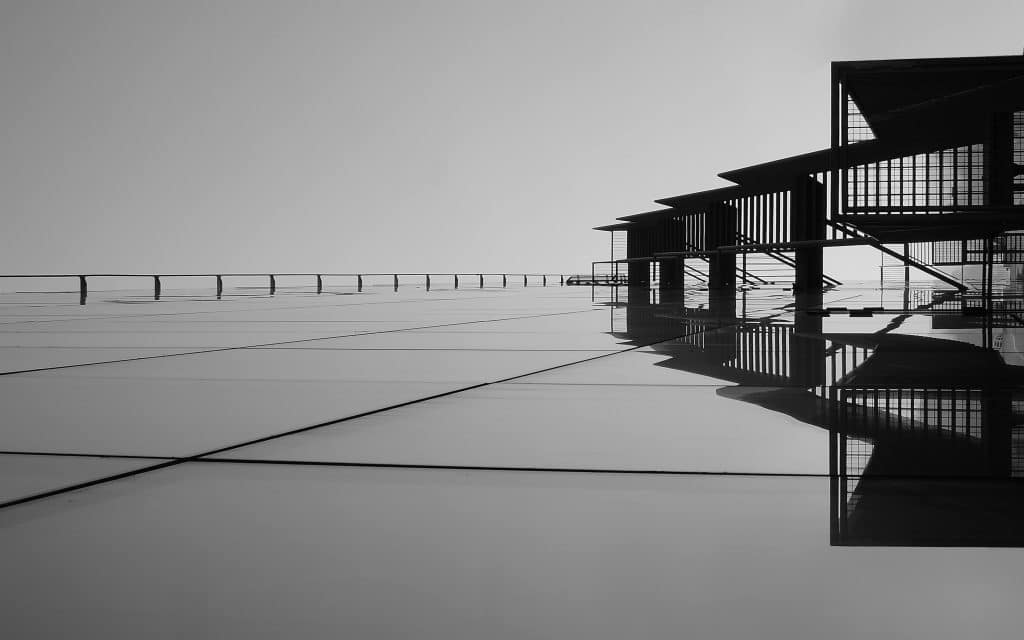
This image is property of images.pexels.com.
Tips for organizing and storing a minimalist baby wardrobe
Once you have curated the perfect minimalist baby wardrobe, it’s essential to have an organized and efficient system for storing and maintaining it. Here are some tips to help you keep your baby’s clothing neat and easily accessible:
Using drawer dividers or organizers
Utilize drawer dividers or organizers to separate and categorize different clothing items. This allows for easy visibility and prevents clothing from becoming jumbled or mixed up. Use separate compartments for onesies, socks, leggings, and other items to create a streamlined and organized wardrobe.
Utilizing hanging storage systems
Hanging storage systems, such as closet organizers or over-the-door hangers, can be a great way to maximize vertical space in your baby’s wardrobe. Hang items like dresses, cardigans, and rompers to prevent wrinkles and make them readily accessible.
Labeling containers or bins
If you have additional storage bins or containers, use labels to clearly identify their contents. This makes it easier to find specific clothing items when needed and helps maintain an organized system. Labeling can be especially helpful as your baby grows and their clothing collection expands.
Regularly assessing and decluttering
Regularly assess and declutter your baby’s wardrobe to ensure that items are still in good condition and suitable for their current size. Remove any clothing that has been outgrown or is no longer in wearable condition. Decluttering periodically helps keep your baby’s wardrobe manageable and ensures that only the essentials are kept.
Embracing secondhand and sustainable options
When it comes to creating a minimalist baby wardrobe, embracing secondhand and sustainable options can be beneficial both for your wallet and the environment. Here are some ways to incorporate these options into your baby’s wardrobe:
Thrifting for baby clothing
Thrifting for baby clothing is a great way to find unique and affordable items. Look for gently used clothing at thrift stores or online marketplaces. Not only will you be saving money, but you’ll also be reducing waste by giving these items a second life.
Swapping with other parents
Consider organizing or participating in clothing swaps with other parents. This allows you to trade clothing items that your baby has outgrown for items that fit their current size. Swapping not only saves money but also fosters a sense of community among parents.
Renting clothes
Another sustainable option is to rent baby clothes. Several online platforms offer clothing rental services specifically catered to babies and young children. Renting clothes allows you to have access to a wide variety of clothing items without the need to purchase and store them long-term.
Opting for ethical and eco-friendly brands
If you prefer to buy new clothing items for your baby, consider purchasing from ethical and eco-friendly brands. These brands prioritize sustainability, fair labor practices, and use organic or recycled materials. By supporting these brands, you contribute to a more sustainable and responsible fashion industry.
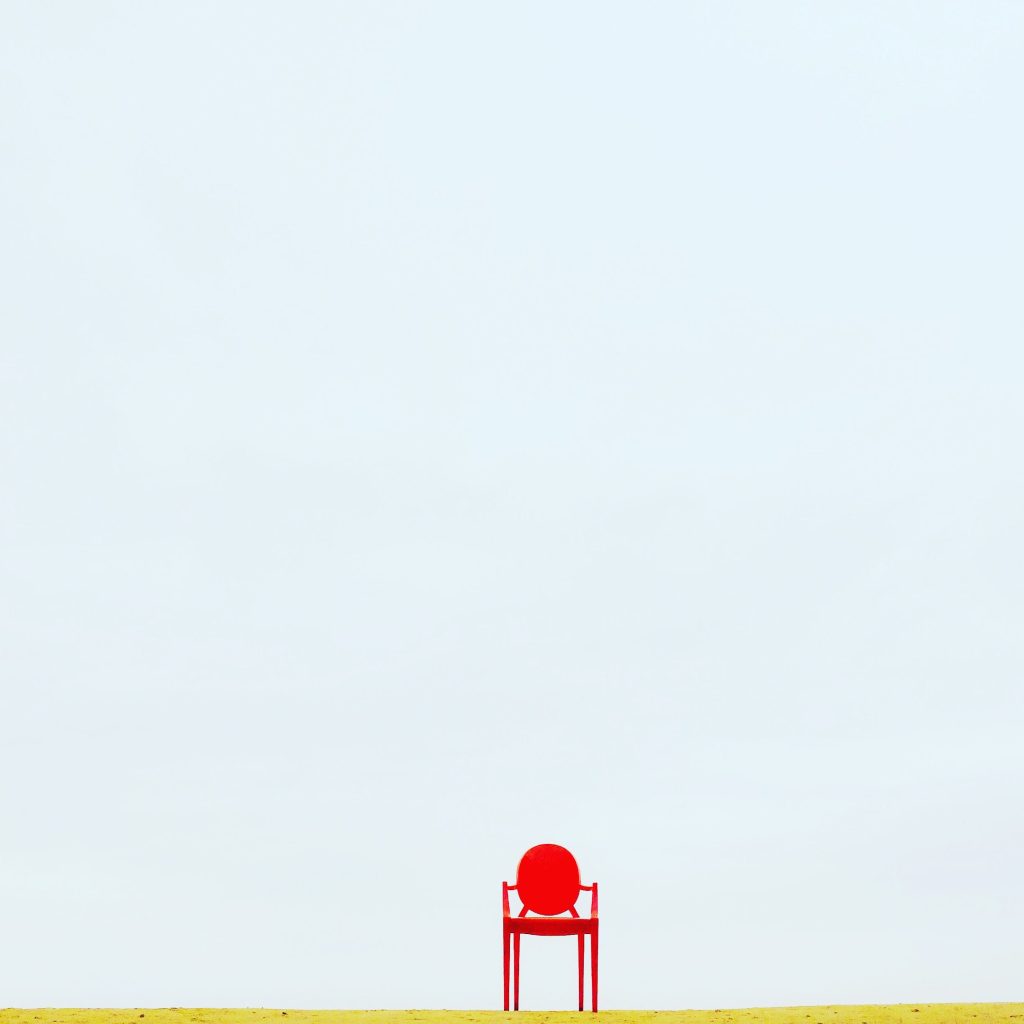
This image is property of images.pexels.com.
Creating a minimalist baby registry
When preparing for your baby’s arrival, creating a minimalist baby registry can help guide your family and friends in selecting practical gifts that align with your minimalist lifestyle. Here are some tips for creating a minimalist baby registry:
Considering need versus want
When selecting items for your baby registry, focus on the essentials rather than unnecessary or extravagant items. Consider the functionality and long-term use of each item. This ensures that you receive gifts that will be useful and appreciated, without cluttering your baby’s wardrobe.
Requesting practical gifts
Instead of traditional newborn outfits or unnecessary accessories, consider asking for practical gifts that can be used throughout your baby’s first year. Items such as onesies, sleep sacks, or gift cards for clothing purchases can all be valuable additions to a minimalist baby wardrobe.
Encouraging experiences over material items
If you prefer to minimize the number of physical gifts you receive, consider requesting experiences over material items. Ask for contributions towards baby classes, memberships, or even a college savings fund. This not only reduces clutter but also provides long-lasting benefits for your child’s development and future.
Avoiding the temptation of excessive baby clothing
It’s easy to get carried away when shopping for cute baby outfits, but it’s important to resist the temptation of excessive baby clothing. Here are some reasons to help you stay mindful:
Understanding a baby’s growth rate
Babies grow quickly, especially during their first year. Purchasing excessive clothing items may lead to many items going unused or being outgrown before they can be worn. Be mindful of this growth rate when building your baby’s wardrobe and avoid buying too far in advance.
Being mindful of marketing tactics
The baby clothing industry is often driven by marketing tactics that play on our emotions. Cute and trendy designs can make it tempting to buy more than what is actually necessary. Stay focused on your baby’s needs and prioritize comfort and functionality over fleeting fashion trends.
Prioritizing comfort and functionality
Comfort and functionality should be at the forefront when selecting clothing items for your baby. Avoid clothing with excessive buttons or complicated closures that can make dressing and undressing your baby a challenge. Instead, prioritize items that are easy to put on, comfortable to wear, and allow for freedom of movement.
Extend the life of baby clothing
To make the most of your baby’s clothing and reduce waste, consider these tips for extending their lifespan:
Repurposing outgrown clothing
When your baby outgrows their clothing items, consider repurposing them. T-shirts can become pajama tops, and pants can be turned into shorts. Get creative and find new uses for these items to extend their life and reduce waste.
Donating or passing down
If you no longer have a need for certain clothing items, consider donating them to local charities or passing them down to other parents. This allows the clothing to be used and loved by others, reducing the environmental impact and providing clothing to those in need.
Consideration for sentimental items
There may be certain clothing items that hold sentimental value, such as the outfit your baby wore home from the hospital. Consider storing these items safely in a memory box or scrapbook. By preserving these sentimental clothing pieces, you can cherish the memories while still maintaining a minimalist baby wardrobe.
Creating a minimalist baby wardrobe is not only practical but also sustainable. By choosing the right clothing materials, selecting essential items, building a capsule wardrobe, and embracing secondhand options, you can create a functional and eco-friendly wardrobe for your little one. With practical considerations, careful storage organization, and mindful gifting, you can navigate the world of baby clothing with ease. Remember, it’s not about having an excessive amount of clothing, but rather about prioritizing quality, comfort, and sustainability for your baby.



